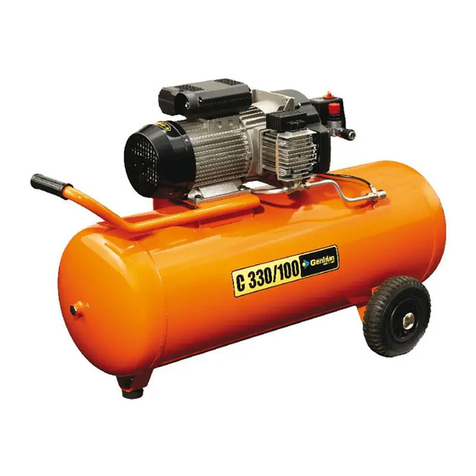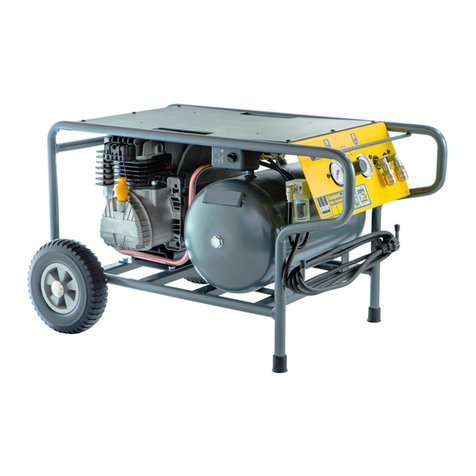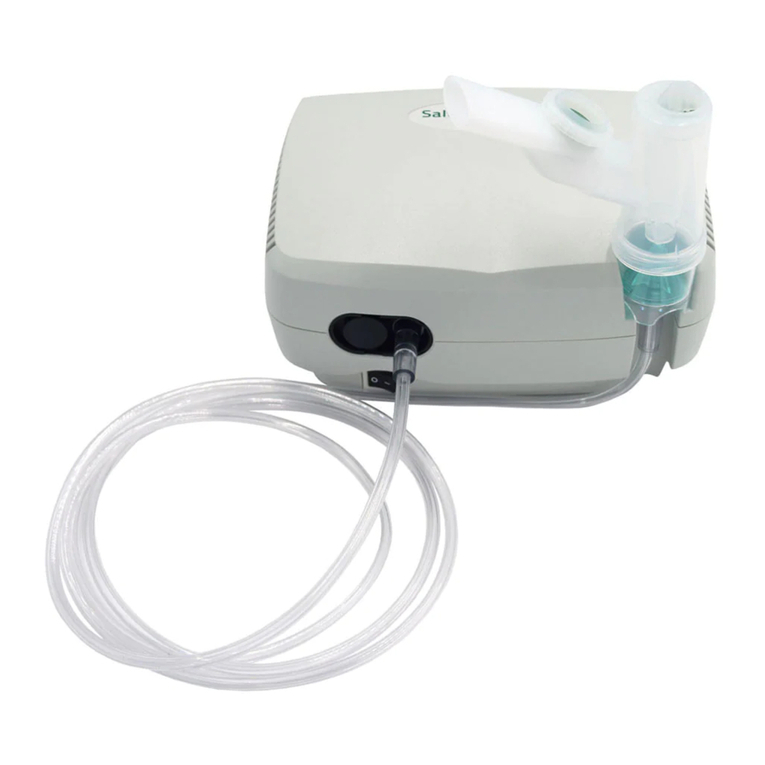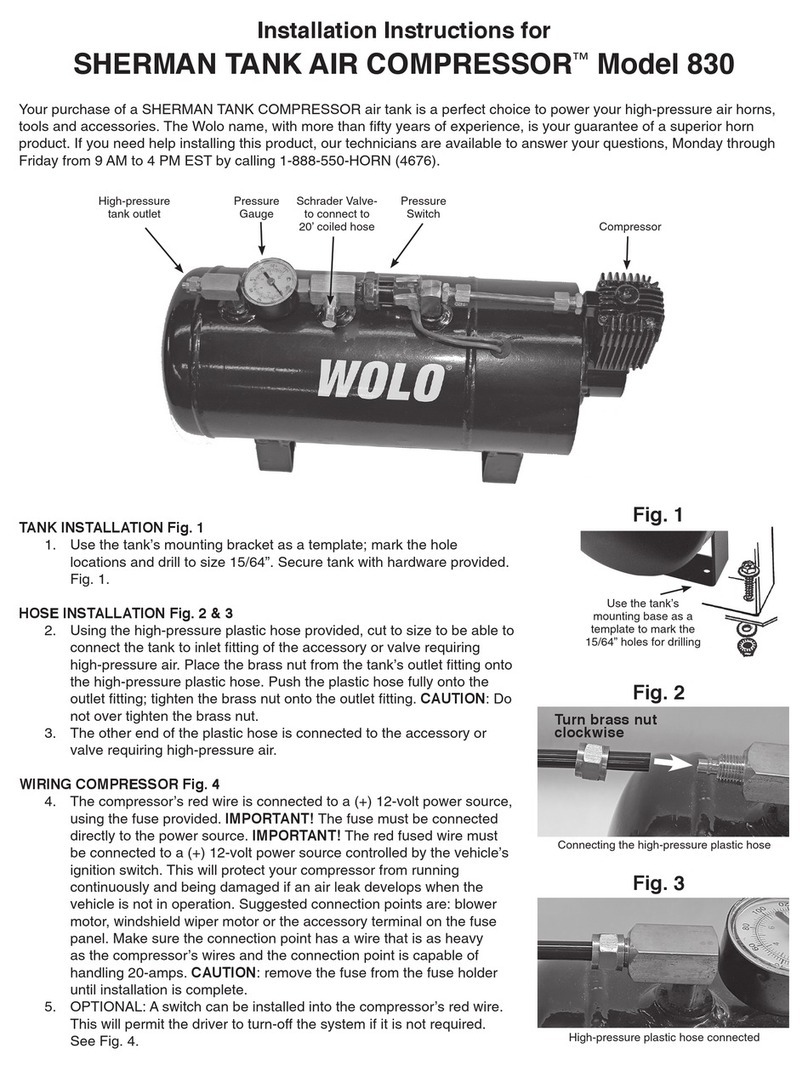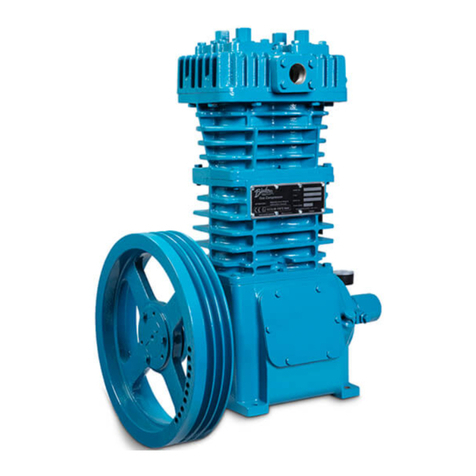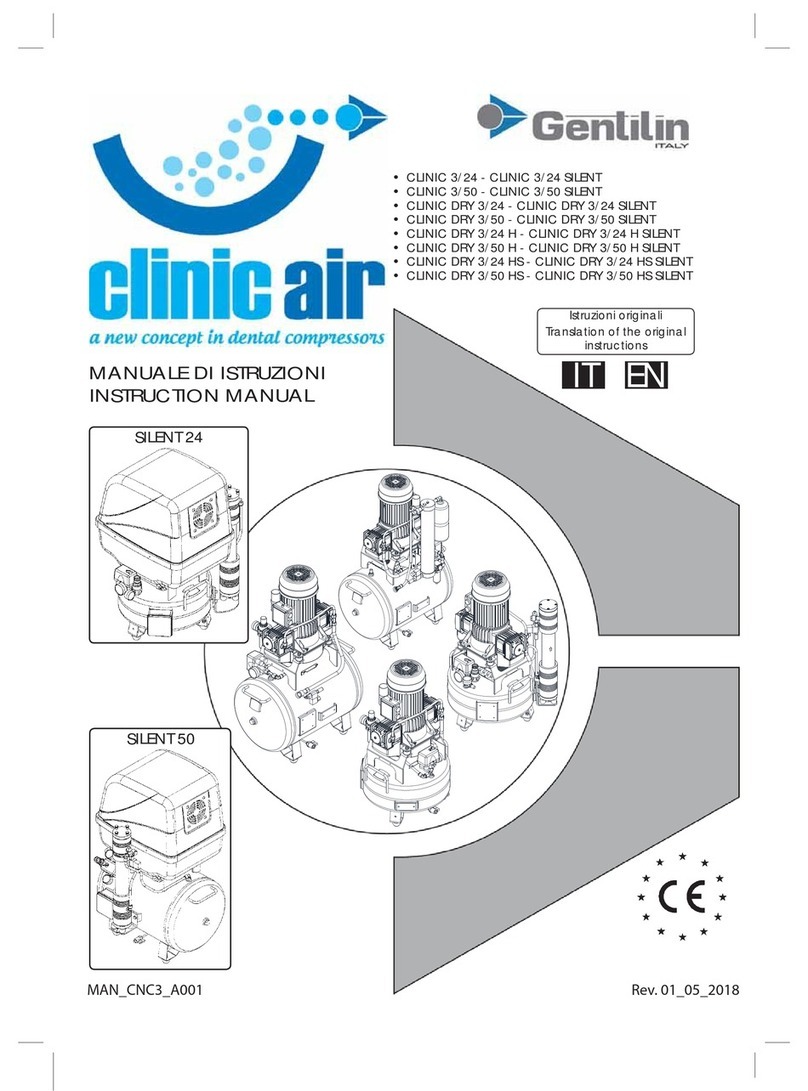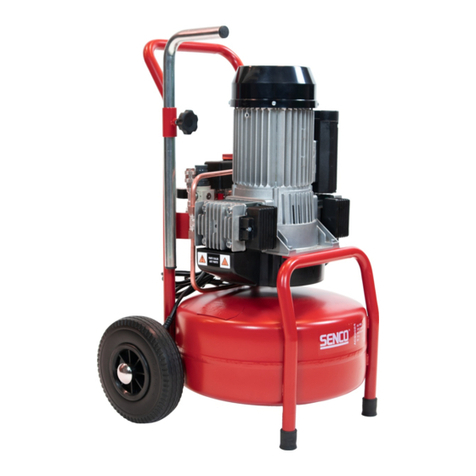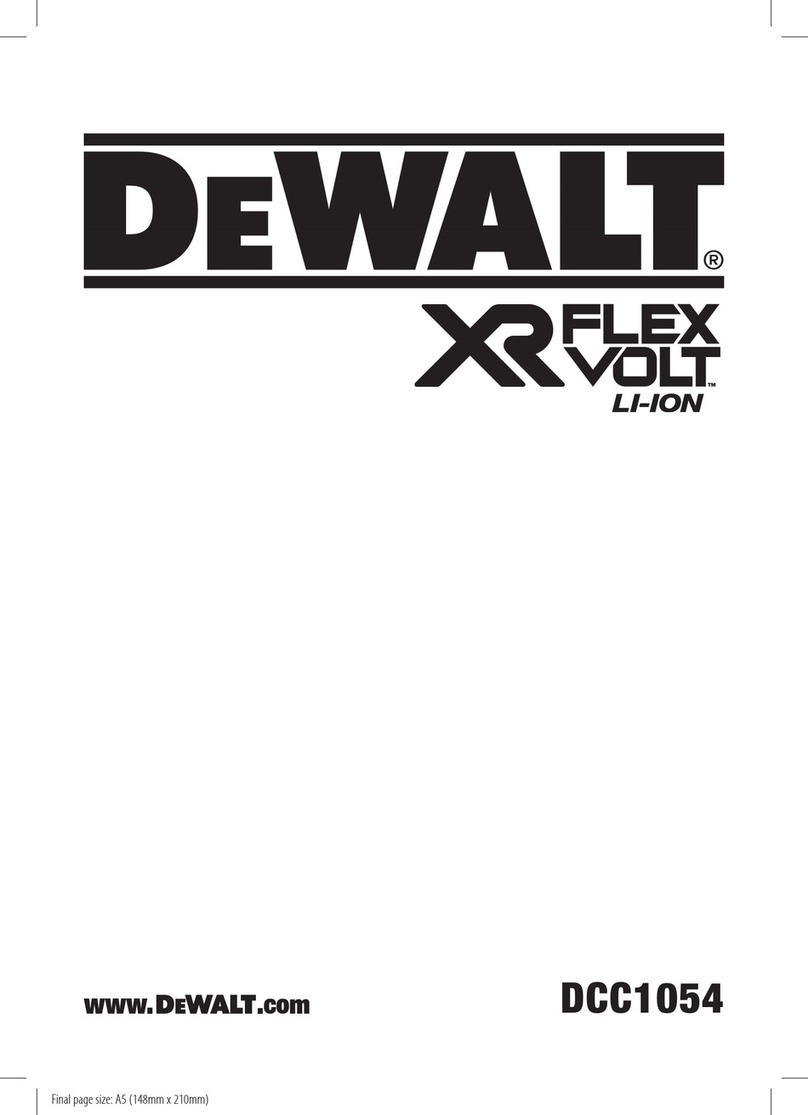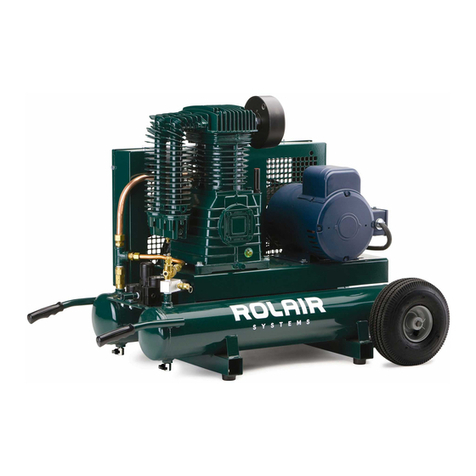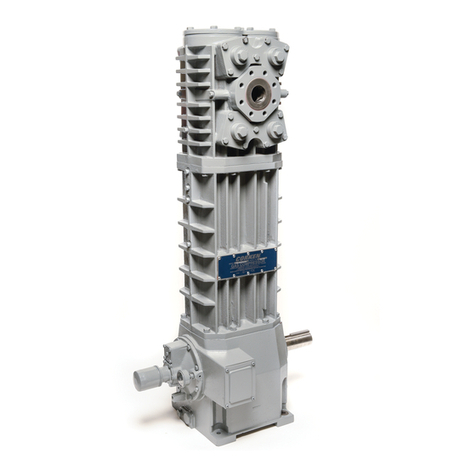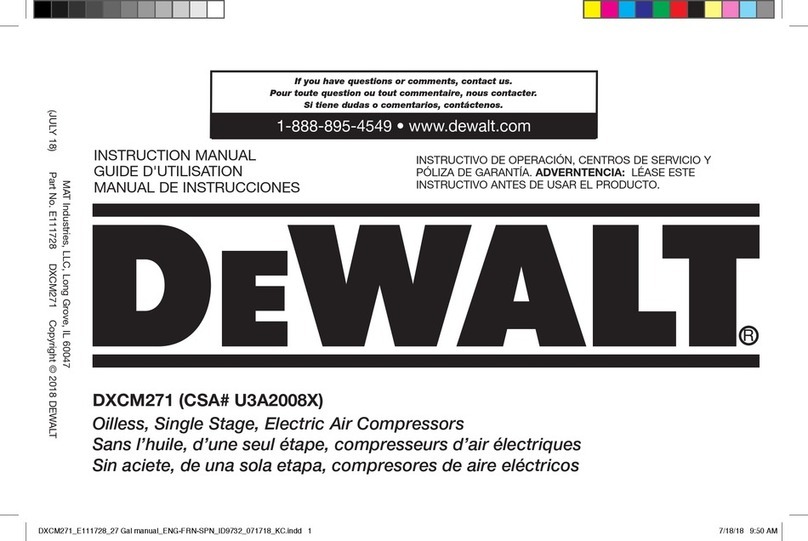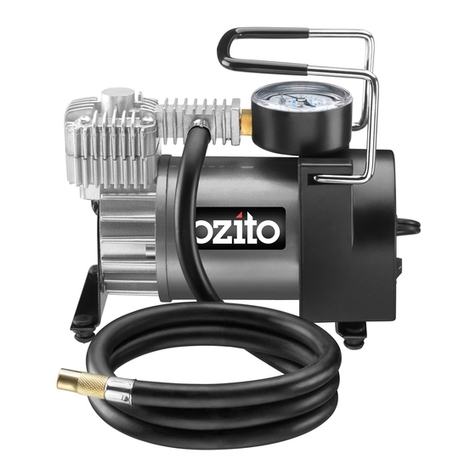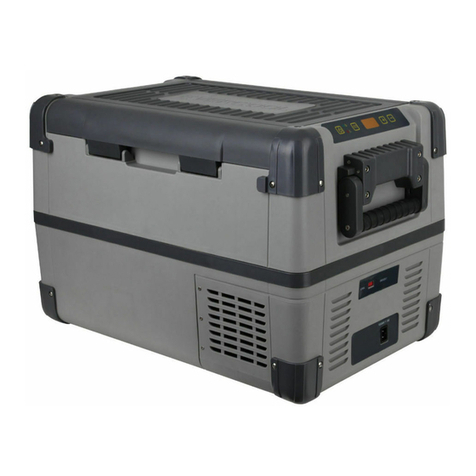
THE POWER SUPPLY NETWORK TO WHICH THE APPLIANCE IS CONNECTED MUST CONFORM TO THE LEGISLATION
CURRENTLY IN FORCE IN THE COUNTRY OF USAGE, CONFORM TO THE TECHNICAL SPECIFICATIONS PROVIDED IN
PARAGRAPH 2 AND BE EQUIPPED WITH A SUITABLE “PLANT EARTHING” SYSTEM.
ALL MATERIALS USED FOR ELECTRICAL CONNECTION MUST BE SUITED TO THE INTENDED USAGE, LABELLED WITH “CE”
IF SUBJECT TO THE LOW VOLTAGE DIRECTIVE 2006/95/CE AND CONFORM TO THE REQUIREMENTS AS SPECIFIED IN THE
LEGISLATION CURRENTLY IN FORCE IN THE COUNTRY OF APPLIANCE USAGE.
DISREGARD FOR THE ABOVE DESCRIBEDWARNINGS MAY LEAD TO IRREPERABLE DAMAGE TO THE APPLIANCE ELECTRICAL
SYSTEM AND SUBSEQUENTLY WARRANTY EXPIRY.
THE MANUFACTURER DECLINES ANY RESPONSIBILITY FOR FAULTS OR ANOMOLIES WITH APPLIANCE OPERATION CAUSED
BY ELECTRICAL POWER SURGES IN ADDITION TO TOLERANCES BY THE SUPPLY ENTITY (VOLTAGE ± 10%, FREQUENCY ± 2%).
WHERE NECESSARY, CONNECT THE APPLIANCE EXCLUSIVELY TO THE ELECTRICAL SUPPLY GENERATOR WITH POWER GRTEA-
TER THAN THE INSTALLED ELECTRICAL POWER (SEE PARAGRAPH 2), IN ORDER TO SUPPORT THE POWER-DRAWAT START-UP.
18.
AIR PIPE EXTENSION AND UTENSILS CONNECTION
1) Connect the utensil to the air pipe (extension).
2) Connect the air pipe (extension) to the appliance air outlet spigot (rif. 11 - Fig. 1).
AIR PIPES (EXTENSION), CONNECTIONS AND UTENSILS WHICH CONFORM TO THE MANUFACTURER’S INSTRUCTION
MANUALS MUST BE USED.
THE USE OF UNSUITABLE AIR PIPES (EXTENSIONS), CONNECTIONS AND UTENSILS AND/OR THOSE WHICH DO NOT
COMPLY WITH LEGILATION CURRENTLY IN FORCE IS STRICTLY FORBIDDEN.
THE MANUFACTURER DECLINES ANY RESPONSIBILITY FOR DAMAGE TO PERSONS, ANIMALS AND OBJECTS CAUSED BY THE
INOBSERVATION OF THE ABOVE DESCRIBEDWARNINGS.
19. SAFETY DEVICES ADOPTED
1) SAFETY VALVE (5 - Fig. 1): a certied safety valve (set to 10.5 bar), installed to the pneumatic system, under the pressure switch. It
tackles over-pressure in the instance where, owing to anomalies, the pressure switch does not function. Safety valve intervention
ensures the operator switches o the appliance and requests the support ofmaintenance persons.
2) PRESSURE SWITCH (4 - Fig. 1): an electro-pneumatic device (set to a minimum of 7 bar and a maximum of 9 bar) installed to
the pneumatic system. It serves to control the automatic start-up of the appliance when the operating pressure comes down to
7 bar and the automatic close-down when the pressure reaches 9 bar.
3) FIXED COOLING FAN PROTECTIVE NET 18 - Fig. 1): this is a xed protection comprising a plastic grill screwed to the base of
the single-cylinder pump assembly. It serves to stop accidental contact with the cooling fan when inmotion.
4) MOTOR PROTECTOR: this is an overload protection installed in the motor which stops it in case of overcurrent and/or short circuit.
It is reset when the temperature returns within the factory-set parameters.
5) TANK PRESSURE GAUGE 17 - Fig. 1): a measuring device installed to the appliance tank. It displays the compressed air pressure
inside the tank.
6) OUTLET PRESSURE GAUGE 10 - Fig. 1): a measuring device installed to the appliance pneumatic system above the air outlet
spigot. It displays the outlet pressure, which can be adjusted using the relative pressure regulator (0÷9 bar) (9 - Fig. 1).
ALL SAFETY DEVICES INSTALLED ON THE APPLIANCE MUST BE REGULARLY CHECKED TO ENSURE THEY ARE FUNC-
TIONING CORRECTLY.
ANY SAFETY DEVICES WHICH ARE NOT FUNCTIONING CORRECTLY OR WHICH ARE DAMAGED MUST BE IMMEDIATELY
REPLACED.
THE HANDLING, EXCLUSION AND/OR REMOVAL OF SAFETY DEVICES INSTALLED ON THE DEVICE IS STRICTLY FORBIDDEN.
REPLACING A SAFETY DEVICE OR COMPONENTS OF SAFETY DEVICES WITH UNORIGINAL REPLACEMENT PARTS IS STRICTLY
FORBIDDEN.
20. SAFETY SIGNS
Safety signs used take the formof a sticky label, applied to the appliance
exterior. Sign denitions:
1Warning – electrical power
2Warning – automatic start-up
3Warning – high temperature
4Instructions must be read
5Power must be disconnected
6Protect your hearing
THE SAFETY SIGN MUST BE KEPT CLEAN SO THAT IT IS VISIBLE.
SAFETY SIGNS WHICH ARE DAMAGED MUST BE REPLACED; ASK FOR A REPLACAMENT FROM THE MANUFACTRER OR
THE AUTHORISED SUPPLIER.
REMOVING AND/OR DAMAGING THE SAFETY SIGN ATTACHED TO THE APPLIANCE IS STRICTLY FORBIDDEN.
21. PERSONAL PROTECTIVE EQUIPMENT PPI
PERSONAL PROTECTIVE EQUIPMENT ISSUED BY THE MANUFACTURER MUST BE USED. AUTHORISED OPERATORS
MUST WEAR PERSONAL PROTECTIVE EQUIPMENT ISSUED BY THE MANUFACTURERS OF THE UTENSILS EMPLOYED
BASED UPON THE WORK TO BE CARRIED OUT. AUTHORISED OPERATORS MUST NOT WEAR CLOTHING AND/OR AC-
CESSORIES THATMAY BECOME CAUGHT IN THE APPLIANCE.
SEGN COMPULSORY PPE TYPE OF WORK
Hand protection
(heat-resistant gloves)
If maintenance work is required without waiting for the motor
and the single-cylinder pump assembly to cool down.
Ear protectors
(earmus)
During all operational phases.
Feet protection
(shoes with reinforced toe caps)
During appliance transportation.
22. RESIDUAL RISKS
Although the Manufacturer has adopted all technical construction solutions in order to make the appliance as safe as possible,
authorised operators please be aware that residual risks remain.
RESIDUAL RISK Danger of burns due to accidental contact with the single-cylinder pump assembly and the motor.
SEVERITY OF DAMAGE Mild damage (normally reversible).
LIABILITY Liability may be incorporated in the instance when the operator decides to voluntarily carry out an
incorrect or forbidden action.
PROBABILITY Small and accidental.
PHASE IN WHICH THE
RISK IS PRESENT
Operation.
SUITABLE PROVISIONS Safety signs (see Paragraph 20). Commitment to use personal protection equipment (PPI) (see Paragraph
21) and/or waiting for the appliance to cool.
23.
AREAS ASSUMED BY AUTHORISED OPERATORS
AREA A: on the rear side of the appliance next to
the command devices, in order to command the
activation and deactivation of the compressor, to
carry out connection/disconnection of the uten-
sils, reading of the gauge and the regulation of the
pressure, cleaning or replacement of the air lter
and opening/closure of the condensate pump.
AREA B: when working to carry out suitable
operation dependent on the type of utensil used
(E.g. veneering, etc.).
24. COMMAND DEVICES
The command devices are:
1Tank outlet gauge
2“ON (I) - OFF (0)”switch
3Pressure switch
4Electrical supply cable
5Outlet pressure regulator
6Tank pressure gauge
7Air outlet spigot
25. PRESTARTUP CHECKS
BEFORE STARTING UP THE APPLIANCE, AUTHORISED OPERATORS MUST CARRY OUT THE FOLLOWING CHECKS.
1) Ensure that no unauthorised persons are in close proximity of the appliance.
2) Ensure that safety devices are not damaged and that they are correctly installed and operational (see Paragraph 19).
3) Ensure that the appliance is correctly positioned (see Paragraph 15).
4) Ensure that the“ON/OFF” switch is in the “OFF(0) position (see Paragraph 24).
5) Ensure that the condensate pump is closed (14 - Fig. 1).
6) Use the compulsory personal protection equipment (PPI) (see Paragraph 21).
7) Ensure that you have read and understood all parts of the present “Instruction Manual”.
26. APPLIANCE ACTIVATION
DANGER OF BURNS UPON ACCIDENTAL CONTACT WITH SINGLECYCLINDER PUMPING ASSEMBLY AND ELECTR
TIC MOTOR. WARNING RESIDUAL RISK SEE PARAGRAPH 22.
THE MANUFACTURTER DECLINES ANY RESPONSIBILITY FOR DAMAGE TO PERSONS, ANIMALS OR OBJECTS CAUSED BY
INOBSERVANCE OF REGULATIONS AND THEWARNINGS DESCRIBED IN THE PRESENT MANUAL.
THE MANUFACTURTER DECLINES ANY RESPONSIBILITY FOR THE OUTCOME FOLLOWING USAGE AS THIS IS DEPENDENT ON THE
UTENSIL USED AND THE PROFESSIONAL SKILLS OF THE AUTHORISED OPERATORS.
THE AUTHORISED OPERATORS MAY ONLY START UP THE APPLIANCE ONLY AFTER HAVING CARRIED OUT THE COMPLULSARY
CHECKS DESCRIBED IN PARAGRAPH 25.
DURING OPERATION, PLEASE ENSURE THAT UNAUTHORISED PERSONS DO NOT COME WITHIN PROXIMITY OF THE APPLIANCE.
AUTHORISED OPERATORS MUST NOT LEAVE THE APPLIANCE UNSUPERVISED WHILST IN OPERATION OR DURING MAIN-
TENNACE INTERVENTIONS.
1) Connect the appliance to the power supply by plugging it in (4 - Fig. 4).
2) Switch on the appliance using the“ON-OFF” switch (2 - Fig. 4) ensuring it is in the “ON (I)” position (the appliance is operational
until it reaches a maximum operating pressure of 9 bar, after which, it switches o automatically).
3) Regulate the outlet pressure using the relevant regulator (5- Fig. 4), according to the utensil used and type of work. Control the
pressure displayed by the relevant gauge (6 - Fig. 4).
DO NOT FULLY SCREW THE OULET PRESSURE GAUGE OR YOU RISK DAMAGING THE MEMEBRANE.
4) Connect the utensil to the air pipe (extension).
5) Connect the air pipe (extension) to the air outlet spigot (7 - Fig. 3).
AIR PIPES (EXTENSIONS), CONNECTIONS AND UTENSILS WHICH CONFORM TO DETAILS AS SPECIFIED IN THE INSTRUC-
TION MANUALS PROVIDED BY THE RELEVANT MANUFACTURERS MUST BE USED. IT IS STRICTLY FORBIDDEN TO USE
UNSUITABLE AIR HOSES (EXTENSIONS), FITTINGS AND TOOLS THAT DO NOT COMPLY WITH CURRENT REGULATIONS.
6) Carry out operations (the appliance will re-start automatically in the instance where the operating pressure falls below 7 bar).
7) Upon termination of operations, switch o the appliance as described in Paragraph 27.
27. APPLIANCE DEACTIVATION
At the end of operations, switch o the appliance as follows:
1) Switch o the appliance using the“ON-OFF” switch (2 - Fig. 4) ensuring it is set to “OFF (0)”.
2) Disconnect the machine from the mains power supply by removing the power cable plug (4 - Fig. 4) from the socket and place
it near the machine.
3) Disconnect the utensil from the air pipe (extension).
4) Disconnect the air pipe (extension) from the appliance air outlet spigot (7 - Fig. 4).
5) Drain the tank condensate pump only once the work cycle is terminated (14 - Fig. 1).
28. MOTOR PROTECTOR
The motor protector is an overload protection installed in the motor which stops it in case of overcurrent and/or short circuit. It is
reset when the temperature returns within the factory-set parameters.
29. EMERGENCY STOP
LAppliance emergency stop can be carried out by turning the “ON-OFF” switch to the“OFF(0)” position (2 - Fig. 4). In order to avoid
any possible danger, authorised operators must carry out the following operations:
1) IMMEDIATELY BRING THE“ON (I) -OFF (0)”SWITCH TO THE “OFF (O)”POSITION (Fig. 5 - Ref. 2).
2) IMMEDIATELY NOTIFYTHE“SAFETY MANAGER”(WHERE THE APPLIANCE IS USED IN A BUSINESS CONTEXT) OF THE EMERGENCY.
30. STARTUP SUBSEQUENT TO AN EMERGENCY STOP
After having resolved the issues which oset the emergency, and checked that no damage and/or anomalies have been caused
to the appliance, with the consent of the safety manager (where the appliance is used in a business context) start the appliance as
described in Paragraph 26.
2
1 3
4 5 6
ABNORMALITIES CAUSE SOLUTION
The appliance will not start or it stops
and will not re-start.
No electrical supply. • Check that the“ON/OFF”switch is in the“ON (I)”position (2 - Fig. 4).
• Check that the electrical plug (4 - Fig. 4) is functioning correctly and is correctly plugged in.
• Check that any extensions used and the plug are functioning correctly.
• Check that the electrical main switch is functioning and in the“ON (I)”position.
Motor protector trips due to
overcurrent and/or short circuit.
• Wait for themotor to cool down and automatic reset (see Paragraph 28).
The appliance restarts numerous times
even without a utensil.
Leakages from the air pipe,
utensil or pneumatic system.
• Check that the pneumatic system is not damaged.
• Check that the air pipe and utensils are intact as well as the connections.
The utensil does not emit air. The tank is not pressurised. • Switchonthe appliance and waituntil the tanklls checking thepressureofthe relevantgauge.
Incorrect regulation of the out-
let pressure.
• Check that the value displayed on the outlet pressure gauge (6 - Fig. 4) is greater than “0“
(zero) bar.
The utensil is damaged. • Check that the utensil is intact and eective.
Fall of pressure in the air tank. Leakages in the air pipe, utensil
or the pneumatic system.
• Check that the pneumatic system is not damaged.
• Check that the air pipe and utensil are not damaged.
• Check that the appliance-air pipe and air pipe-utensil connections are correct.
• Check that the condensate pump (14 - Fig. 1) is securely closed.
Safety valve intervention. Pressure switch fault. • Contact an authorised Supplier.
Ai r loss f rom the pressure switch when
appliance is o.
Unclean or worn return valve. • Contact an authorised Supplier.
The appliance vibrates and/or emits
lots of noise.
Mechanical fault. • Contact an authorised Supplier.
Frequentstart-ups and low performance. Air lter dirty. • Clean the lter (see Paragraph 31).
Fig. 4
STANDARD MAINTENANCE TABLE
FREQUENCY INTERVENTION AREA INTERVENTION TYPE
ONCE A DAY
Safety devices Ensure they are intact, correctly installed and functioning.
Electrical cable and plug Visual check of usage status.
Tank Upon termination of each work cycle, rest the appliance on the ground and
drain the tank condensate pump opening the condensate pump (14 - Fig 1).
EVERY WEEK
1 air lter Remove the screw (2 - Fig. 5). Remove the cover (1 - Fig. 5).
Extract the lter (3 - Fig. 5) and clean it using compressed air.
After putting back the lters, remount the cover.
NOTE: REPLACE IN THE INSTANCE WHERE IT IS WORN.
12
3
4
7
6
7
Rev. 00_06_2016MAN_B110_A001
1
2
3
1
31. STANDARD MAINTENANCE
All activities carried out to ensure use and operation of the appliance, via various
intervention types (regulation, valve checks, cleaning of air lters, etc.) executed by
the authorised maintenance person according to pre-established time intervals.
AUTHORISED OPERATORS MUST ONLY CARRY OUT OPERATIONS FOR
WHICH THEY ARE QUALIFIED (SEE PARAGRAPH 6) AND WITH THE
CONSENT OF THE SAFETY MANAGER (WHERE THE APPLIANCE IS USED
IN A BUSINESS CONTEXT).
THE OPERATOR MUST NOT LEAVE THE MACHINE UNSUPERVISED WHILE IT
IS WORKING AND DURING ROUTINE MAINTENANCE OPERATIONS.
Fig. 5
32. EXTRAORDINARY MAINTENANCE
All activities carried out to ensure use and operation of the appliance, via various intervention types (regulation, valve checks, cle-
aning of air lters, etc.) executed by the Manufacturer’s technicians according to pre-established time intervals and in the instance
of faults or wear and tear.
IN THE INSTANCE OF EXTRAORDINARY MAINTENANCE, TECHNICAL ASSISSTANCE PROVIDED BY THE MANUFACTURER
OR THE AUTHORISED SUPPLIER MUST BE REQUESTED.
33. DEMOLITION
ALL MACHINE COMPONENTS MUST BE IDENTIFIED ACCORDING TO “EWC CODE” (EUROPEAN WASTE CATALOGUE)
DEFINITIONS AND DISPOSED OF BY AUTHORISED AND SPECIALISED COMPANIES IN TOTAL OBSERVANCE OF LEGI-
SLATION IN FORCE IN THE COUNTRY OF DEMOLITION.
WASTE ELECTRICAL AND ELECTRONIC EQUIPMENT (WEEE) MUST BE DISPOSED OF IN TOTAL COMPLIANCE WITH
THE REGULATIONS IN FORCE IN THE COUNTRY OF DEMOLITION OF THE APPLIANCE.
34. REPLACEMENT PARTS
ORIGINAL SPARE PARTS FOR ANY REPLACEMENTS MUST BE EXCLUSIVELY ORDERED FROM THE MANUFACTURER OR
AUTHORISED DEALER. USING UNORIGINAL REPLACEMENT PARTS IS FORBIDDEN.
35. ANOMALIES CAUSES SOLUTIONS
The following table displays various scenarios which may occur when using the appliance.
AUTHORISED OPERATORS MUST ONLY PERFORM THE OPERATIONS THEY HAVE BEEN SPECIFICALLY TRAINED FOR (SEE
PARAGRAPH 6) AND WITH THE PERMISSION OF THE PERSON IN CHARGE (IF THE MACHINE IS USED WITHIN A COMPANY).








